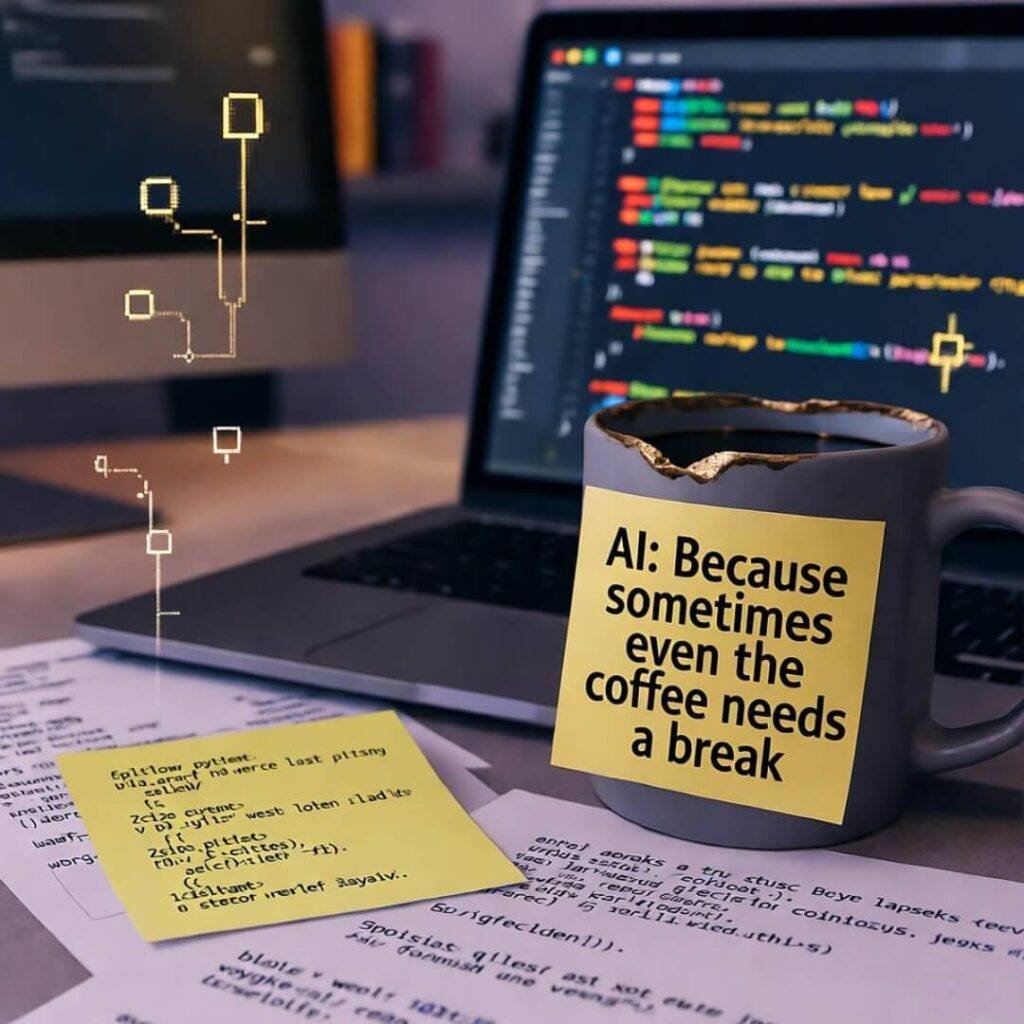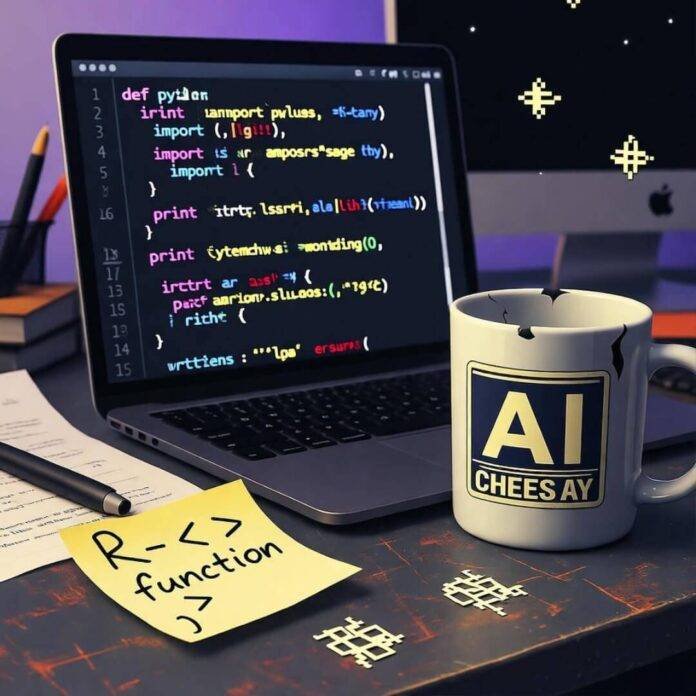So, I’m sitting here in my tiny Seattle apartment, rain hammering the window like it’s got a personal grudge, trying to make sense of the top AI programming languages that basically own my soul in 2025. Like, AI’s everywhere now—pretty sure my smart toaster’s judging my bagel choices with some fancy algorithm. I’m no coding rockstar, okay? I’ve spilled Red Bull on my keyboard, raged at a missing semicolon for hours, and once pushed a half-baked AI model to GitHub that crashed so bad I wanted to yeet my laptop. But I’ve been fumbling through these top AI programming languages, and I’m gonna ramble about what’s worth your time, straight from my messy, caffeine-addled brain.
Why I’m Kinda Obsessed with Top AI Programming Languages
AI coding’s like trying to teach a cat to do math—it’s infuriating, but when it works, you’re basically Einstein. I got into this because I wanted to build a snarky chatbot to mock my bad habits (still debugging that one, whoops). Picking the right language is make-or-break, though. I learned that when I tried using some janky old framework for a machine learning project and spent three days crying over error logs. Pro tip: Don’t do that. Here’s my sloppy take on the top AI programming languages you need to know in 2025, based on my very human, very error-prone journey.

Python: The GOAT of AI Coding
Okay, real talk: if you’re not using Python for AI, what’s your deal? It’s the top AI programming language for a reason. I jumped in after seeing a million X posts hyping it, like, “Fine, I’ll try it.” It’s crazy versatile—TensorFlow, PyTorch, scikit-learn, you name it. I built my first neural network in Python last year, and when it actually worked, I legit danced around my apartment like a dork. But I’ve also cried over a misplaced colon at 2 a.m. Why is Python so picky about punctuation?
- Why it’s fire: Libraries for everything. Deep learning? PyTorch. Data stuff? Pandas. It’s like an AI candy store.
- Why it’s a nightmare: Version conflicts. I once spent a whole day untangling a pip install mess. Never again.
- Pro tip: Start with Jupyter notebooks—they’re forgiving when you’re a hot mess like me.
Check out Python’s official site for the basics, or dive into TensorFlow’s tutorials if you’re feeling brave.
Julia: The Speedy Underdog That Slapped Me
Julia’s not as famous as Python, but it’s sneaking into the top AI programming languages like a ninja. I found it while scrolling X at midnight (bad habit, I know), and some post called it “Python’s faster sibling.” I was skeptical, but I tried it for a machine learning project, and dang, it’s fast. I coded a numerical simulation in Julia last month, and it ran so quick I thought I’d broken it. Turns out, I had—a dumb type error had me Googling like a maniac. Oops.
- Why it’s dope: It’s stupid fast for math-heavy AI stuff, like crunching big datasets.
- Why it’s annoying: Smaller community means fewer answers online. I felt like I was lost in the woods.
- Pro tip: Mess around in Julia’s REPL—it’s like a playground for your AI coding ideas.
Hit up Julia’s official docs to get started.
R: My Guilty Pleasure for Data Viz
R’s like that quirky friend who’s weirdly good at one thing—making data look pretty. I started using it because my Seattle coworker wouldn’t shut up about it, and I was like, “Ugh, fine.” Then I made this stunning ggplot2 chart for a work presentation, and I was sold. R’s not the top AI programming language for building models, but for stats and visualizations? It’s chef’s kiss. I once spent an entire afternoon tweaking a chart’s colors instead of, you know, doing my actual job. My boss wasn’t thrilled.
- Why it slaps: Packages like ggplot2 make your AI results look like a masterpiece.
- Why it’s weird: It’s clunky for production-level AI. I tried deploying an R model once, and it was like herding cats.
- Pro tip: RStudio’s a game-changer. It’s like a warm hug for your data.
Scope out R’s official site or RStudio’s resources for some solid tutorials.

My Epic Fails and What They Taught Me
I’m not some AI coding god, alright? I’ve screwed up so many times. Last summer, I thought I’d be a genius and mix Python and R in one project. Disaster. My laptop sounded like it was gonna blast off, and I had to beg my friend to help me fix it at 1 a.m. Also, I learned to use Git the hard way after accidentally deleting a week’s worth of code. Yeah, I ugly-cried into my burrito. But every mistake’s taught me something about these top AI programming languages.
Here’s what I’d tell my dumb past self:
- Python’s your safe bet. It’s kind when you’re a mess.
- Julia’s worth the pain for math-heavy AI projects.
- R’s for charts, not everything. Don’t overcomplicate it.
- X posts from other devs are a lifesaver when you’re stuck.
Wrapping Up This Trainwreck of a Post
So, that’s my chaotic spiel on the top AI programming languages you should care about in 2025. I’m just a guy in a rainy Seattle apartment, surrounded by empty coffee cups and a cat who’s definitely judging my code. Python’s my ride-or-die, Julia’s the shiny new toy, and R’s the artsy sidekick. I’ve crashed and burned more times than I can count, but every error’s made me a tiny bit less clueless. If I can stumble through AI coding, you can too. What’s your go-to language? Hit me up on X or drop a comment—I’m curious!





































